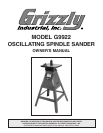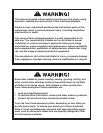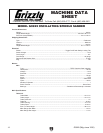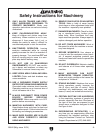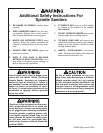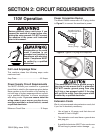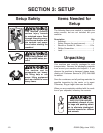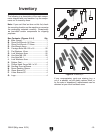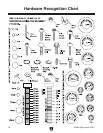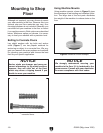
-4-
G9922
INTRODUCTION
Foreword
We are proud to offer the Model G9922 Oscillating
Spindle Sander. This machine is part of a grow-
ing Grizzly family of fine woodworking machinery.
When used according to the guidelines set forth in
this manual, you can expect years of trouble-free,
enjoyable operation and proof of Grizzly’s com-
mitment to customer satisfaction.
The specifications, drawings, and photographs
illustrated in this manual represent the Model
G9922 when the manual was prepared. However,
owing to Grizzly’s policy of continuous improve-
ment, changes may be made at any time with no
obligation on the part of Grizzly. For your conve-
nience, we always keep current Grizzly manuals
available on our website at www.grizzly.com.
Any updates to your machine will be reflected
in these manuals as soon as they are complete.
Visit our site often to check for the latest updates
to this manual!
We stand behind our machines. If you have any
service questions, parts requests or general
questions about the machine, please call or write
us at the location listed below.
Grizzly Industrial, Inc.
1203 Lycoming Mall Circle
Muncy, PA 17756
Phone: (570) 546-9663
Fax: (800) 438-5901
E-Mail: techsupport@grizzly.com
If you have any comments regarding this manual,
please write to us at the address below:
Grizzly Industrial, Inc.
C
/O Technical Documentation Manager
P.O. Box 2069
Bellingham, WA 98227-2069
Email: manuals@grizzly.com
Contact Info
An oscillating spindle sander is used to sand
the edges of contoured or irregularly shaped
workpieces.
The Model G9922 Oscillating Spindle Sander
uses 2" x 5
1
⁄4" sanding sleeves and oscillates with
a 1" stroke at a rate of 64 strokes per minute.
The 14
1
⁄2" square sanding table provides a solid
platform for supporting workpieces and can tilt up
to 45° for sanding beveled edges. The table also
features a miter gauge for sanding straight edges
on a miter-cut workpiece.
The integrated 2" dust collection port can be fitted
to a dust collection system to reduce the amount
of dust released by the machine.
During typical operation, the table is tilted to the
desired angle and locked in place with the lock
knobs. The machine is turned on and the spindle
is allowed to reach its full speed. With steady pres-
sure against both the table and the sanding drum,
the workpiece is fed past the drum. The amount
of material removed depends on the speed and
pressure with which the workpiece is fed and the
grit of the sanding sleeve.
Sanding sleeves are replaced by un-threading the
plastic cap and sliding the sleeve off the drum.
Functional Overview



